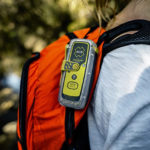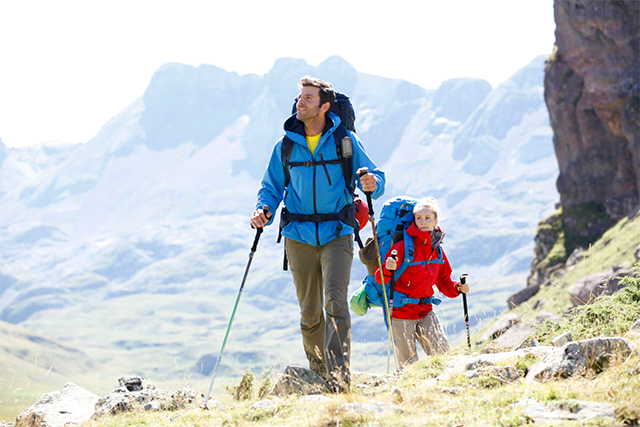
Spending time in nature is one of the healthiest and rejuvenating activities you can do for a healthy body and mind. Still, being unproperly prepared when going for long hikes, can be dangerous without having the proper outdoor equipment. Therefore, planning before going on a hike is essential, as it doesn’t only take the stress away but also prepares you mentally and physically for your upcoming adventure.
Some of the most important outdoor gear you should consider taking with you before you decide to hit the road include sleeping bags, tents, navigation gear, or first aid supplies which are very important if you want to have an enjoyable and safe adventure. Besides all these we mentioned, hikers, backpackers, and other outdoor enthusiasts decide to carry with them their trekking poles. The reason, for this, is that many people find them to be especially useful outdoor equipment, that enhances their stability and provides support on all types of terrain.
Choosing high-quality outdoor gear can be challenging sometimes if you take into consideration the vast range of choices and brands that manufacture the same products. In this article, we are going to explore the topic of a trekking pole, have a look at some of the features you need to consider before choosing them, and list some of the benefits associated with their usage.
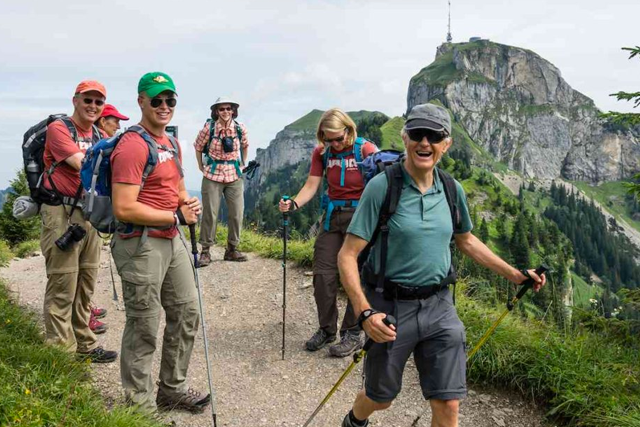
Features to Consider Before Choosing the Right Trekking Pole
Find the Right Length
To make sure you choose the correct length for a walking pole you have to keep in mind a number of factors, including the types of outdoor sports intended for, the route profile, as well the ability level of the user. Most often the length is defined by how steep the incline is. For instance, poles for mountain ascents should be shorter, while those used for descents need to be longer than the poles used for walking on even terrains.
A good rule of thumb that should help you find the ideal length for you is to see if your elbows form a right angle with the pole while walking. This is very important, as correctly adjusting the length of the pole can help you stay balanced, support your legs on the ascent and relieve your knees when descending.
Types of Trekking Poles
There are various types of hiking poles on the market, which differ between themselves on the level of adjustability of length they offer. For instance, there are fixed length trekking poles that have fixed lengths and variable telescopic ones that can have their length adjusted to suit your needs. However, this is more a matter of personal preference, as what is considered long length for one may be perfect for some more experienced hikers.
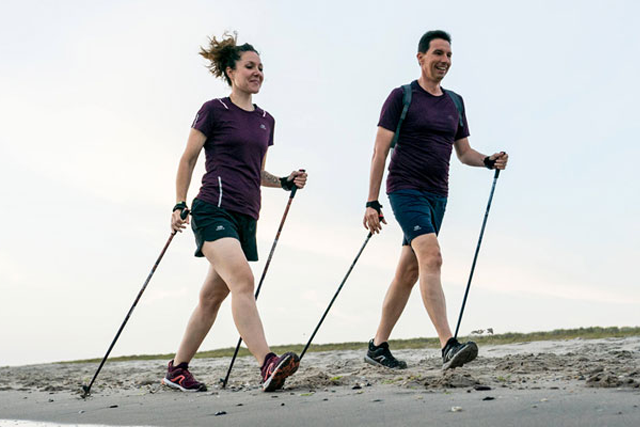
Select the Right Material
Another aspect worth considering is choosing the right type of material. This feature will eventually influence the pole’s weight and its durability. Aluminium and composite are some of the most commonly used materials for the manufacturing of walking poles. Aluminium poles usually weigh between 8-10 kg, and they are extremely durable. However, in certain cases, especially if under lots of stress, they can bend but they won’t break.
The composite ones feature shafts that are made entirely or partially from carbon, which is a lighter and more expensive option. Still, carbon walking poles are more prone to breakage or splintering, especially if you are doing hiking on rugged, steep, and uneven terrains.
Learn Some Useful Tips
Finally learning some useful tips and suggestions when it comes to using trekking poles is also very important. These involve learning to navigate the terrain and maintain a natural arm swing as if you don’t carry poles in your hands. Most types of hikers try to maintain a proper rhythm by planting the opposite trekking pole at the right time with the opposing foot ( right foot, left poles, left foot, right pole).
Occasionally you may also want to plant both poles at the same time, which can be especially useful when you are hiking steep terrains and need the stability of both poles on the ground at the same time. Soon, implementing these steps will become completely natural for you, so you won’t have to even think about it.
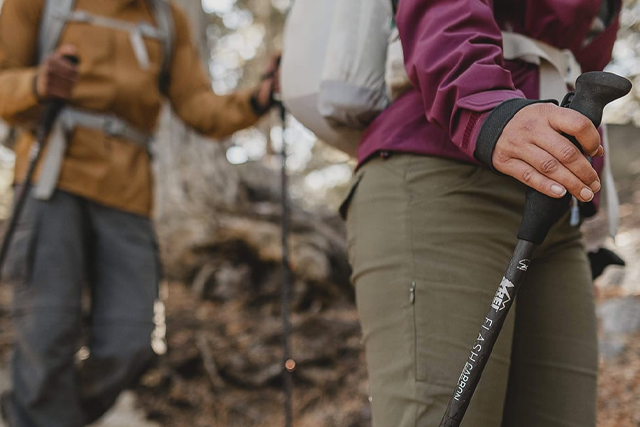
The Benefits of Using Walking Poles
Now that we explained all the important features you need to be mindful of when choosing a trekking pole, let’s have a look at some of the benefits they provide.
Protect Your Knees and Help you Maintain the Right Balance
Well, there are a number of reasons why you should consider taking your trekking poles with you. According to a study conducted, the results have shown that people who used walking poles when trekking on steep terrain, experienced significantly less muscle soreness than those who decided to hike or climb unaided.
Poles also help you maintain a proper balance, as they help in distributing your bodyweight evenly. They work on the principle of reducing the impact on your legs, knees, ankles, and feet, especially when going downhill.
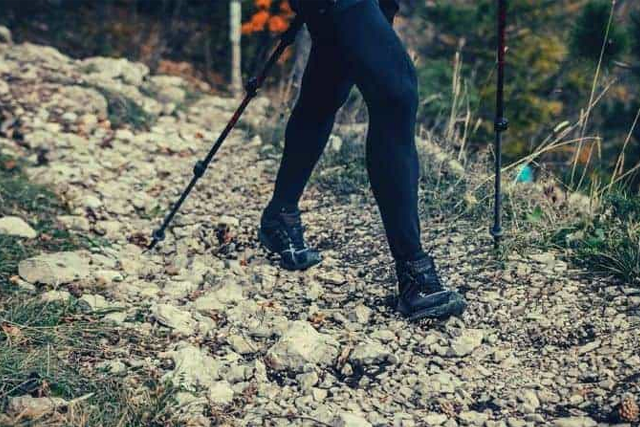
They are Useful when Encountering Obstacles on the Trail
Moreover, trekking poles can be very helpful when you encounter obstacles in the trail such as river crossing and rocky terrains. For instance, whenever you need to cross puddles they can help you wade through and maneuver around them with ease. For getting up on larger rocks they can be especially useful as a walking pole can give you the needed push to get you all the way onto the rock.
Improve your Walking Speed
Using poles on a consistent basis whenever you go outdoors, can help you establish a consistent rhythm, which in turn plays an important role in increasing your walking speed.
Better Posture and Endurance Level
Carrying a large backpack full of gear can place a tremendous amount of weight on your body, which can make the hiking experience less enjoyable. Many people have found the usage of poles to be especially useful as it helped them maintain a proper upright posture. This can be truly a challenge especially when carrying a large backpack. The usage of poles also helped many hikers to improve their breathing and strengthen their muscles, which significantly resulted in improving their endurance level as well.





